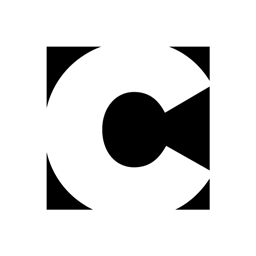Site Imitates Art (as Imitated by Science)

I have recently come to a rather startling realization about myself: The older I get the fewer concrete opinions I seem to have. It is as if I have become apathetic from the constant barrage of information thrown at me everyday of my life. Television, radio, newspapers, cinema, and — oh — let’s not forget the Internet.
There are two factors working to prohibit the solidification of opinion in my mind: The information itself, and the medium (make it plural) via which it is delivered. I know that the information I receive is shaded with varying degrees of gray. I know that one person’s argument concerning any subject matter, no matter how intelligently presented and thoroughly reasoned, can always be put into question by another reasoned and well-presented stance. I have learned (as I am sure many of us have) to take what I can from each argument, to weigh any apparent biases, and finally to conclude that I’ll never really know any actualities about the subject at hand. (I knew I should have read McLuhan.)
I guess it is with this realization in mind that I so enjoy Etienne-Jules Marey: Movement in Light. As described on the site it is a "virtual copy" of an exhibition being presented at La Maison du Cinema in Paris. It is an exhibition of the visual, recordings made by Marey as part of his research into the motion of bodies, and of the apparatus he created and used to create these visual recordings.
Unlike other approaches to online exhibitions (such as WebMuseum for instance) the approach here appears to be one of staying true to the style of an exhibition, and not to overwhelm the visitor with an encyclopedic format. Neither does this site bombard you with any weighty treatise on the importance of Marey’s work or of his place in history. Instead, the designers of the Movement of Light present a showcase of this man’s incredible imagination and technical prowess with a site that is subtle in approach. The exhibit also attempts to express Marey’s technique itself.
The Design
Two aspects of this site’s design become overwhelmingly apparent right from the start. First, almost every hyperlink opens a new browser window, and secondly these windows scroll not top to bottom, but rather left to right. Both of these features annoyed me terribly at first, but after spending some time, there, the logic of the design became apparent. I ultimately found it extremely simple to breeze through the exhibit.
Each hyperlink on the home page links to a separate folder that you open, examine, and then close. It is not a passageway leading outside of the site (rare, considering the vast majority of Web pages have at least one external link). This same structure is followed on the enclosed exhibition pages with their presentation of individual pieces — open, examine, and close. This approach not only demonstrates the hierarchical structure of the site but also serves the purpose of keeping you on the right path, in step with the timeline represented by scrolling left to right.
Although not forced to follow the left-to-right flow of the exhibition, and thereby the evolution of Marey’s work, the design of the site makes it very inviting to do so. The solid black background offers no distraction from the content and especially serves to highlight the rotating line segments bordering the bottom of the page, which themselves reinforce this sense of traveling through time.
The exhibition is broken into five separate "collections" representing different approaches or subjects tackled by Marey. Thumbnails of the individual pieces of each collection are arranged chronologically. Clicking any of these opens another browser window containing a larger view of the piece, along with a title plaque. Again, one is neither burdened with imposing opinions of the subject matter, nor distracted in any other way from the piece itself. If some explanation of an apparatus is necessary — as with the sphygmograph, for example — a simple animation is provided to demonstrate the principles of the mechanics involved.
The Science
Marey was not an artist; nor was he a filmmaker in any sense that we understand the word today. He was not so concerned with expression as he was with accurately recording physical phenomena, to aid in his analysis of bodies in motion. He was a scientist, and as it turns out an ingenious inventor ceaselessly applying his skills and craftsmanship to the task at hand. The graphical method he developed early in his career (and demonstrated so effectively in the animation of the sphygmograph) lies at the heart of his work with chronophotography. Though a photographics technique, chronophotography differs from the instantaneous recording traditionally associated with photography. By quickly alternating a shutter or a light source while a subject passes before the camera, Marey was able to create a record of the subject’s movement by superimposing a series of images in one photograph. With few exceptions, the recorded motion of the subject is lateral across a rectangular shape, in this case that of a film plate.. Recording motion in such a manner allowed graphical analysis of the motion. And as a final kudo to the designer of the exhibit itself, I can’t help but feel the lateral scrolling of the browser windows themselves was intended to demonstrate, not through extrapolation, but through impression, the central importance this architecture played in Marey’s work.
If you take a few minutes to peruse this exhibition, you’ll likely find yourself pleasantly surprised. It’s a fine and elegant argument for the notion that the distance between science and art isn’t as vast as one might suspect.
Enjoy and goodbye.
Egghead Randall Lusson is a production assistant for creativepro.com .
This article was last modified on January 8, 2023
This article was first published on June 24, 2000




